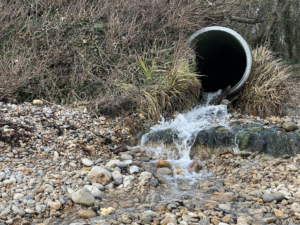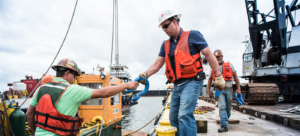Liquid Waste Disposal Perth poses a special environmental risk, and companies that fail to follow proper liquid waste disposal procedures can face serious penalties. Improper disposal of liquid waste can contaminate groundwater and surface water sources, harming wildlife and humans alike.
Many liquid wastes require extensive treatment before disposal. This may include chemical treatment to neutralize pathogenic substances and incineration to destroy harmful compounds.

There are four main types of liquid waste: industrial, agricultural, medical, and household. All of these can pose a threat to the environment if not properly disposed of. Industrial liquid waste includes wastewater, chemical spills, cooling water, and other liquid byproducts of manufacturing processes. Agricultural liquid waste comes from livestock, crop washings, and irrigation runoff. Medical facilities generate much liquid biological waste, such as blood and bodily fluids. Finally, households produce a lot of household liquid waste, such as used cleaning products, expired medications, and cooking oils.
Liquid waste can be dangerous if it is left untreated, as it can pollute surface and groundwater. It can also harm aquatic ecosystems and kill marine organisms, as well as cause gastrointestinal illnesses in people who drink contaminated water. It can also seep into the soil, contaminate plants and cause land degradation and biodiversity loss.
Safely disposing of liquid waste involves separating it into different categories based on its hazardous and non-hazardous properties. You must then choose treatment and disposal methods that comply with regulations and guidelines. This can be a complex process, but it will help you protect the environment and human health.
Depending on the type of liquid waste, you may need to store it in containers before transporting it for processing or disposal. Ideally, it would be best if you stored it in an area that is well-ventilated and has a cover to prevent leaks. Also, make sure you have bins of the right size to suit your needs. Clearly label the bins and educate your employees on what can and cannot be flushed down drains (such as paints, oils, and chemicals).
Once you have separated your waste, you can send it to an authorized facility for processing and disposal. They can treat the waste with anaerobic processes to break down organic material in the absence of oxygen, which produces a gas that can be used as energy. They can also use biofilters and bioreactors to support the growth of microorganisms that metabolize and break down organic pollutants, which makes the waste cleaner. They can also use techniques like nutrient removal to reduce nitrogen and phosphorus compounds that are harmful to aquatic ecosystems.
Classification of Liquid Waste
The different types of liquid waste require a range of methods and treatments to ensure that they are properly cared for. Whether you are an individual in a residential setting or a professional in a commercial or production industry, it is important to understand how the various liquid wastes are created and what to do with them.
Liquid waste management is critical because it is a potential source of pollutants that can adversely affect the chemical, physical, and biological integrity of surface or groundwater. The primary sources of liquid waste include sewage, chemical and solvent effluents, agricultural runoff, industrial wastewater, and oil and grease. The proper treatment of these wastes can minimize their harmful effects on the environment and public health.
While some liquid wastes are non-hazardous, others are toxic and may pose a threat to human health. This is why it is crucial to separate the two types of liquid waste. The process of classification involves separating the hazardous and non-hazardous liquid wastes, determining their risk levels, and selecting treatment and disposal methods that abide by local and federal regulations.
There are two main categories of liquid waste: Listed and Characteristic. Listed wastes are those that the EPA has identified as hazardous. They are classified as P-listed or U-listed depending on their toxicity level and hazard characteristics, respectively. Characteristic wastes, on the other hand, are discarded commercial chemical products that have not yet been used.
Once the liquid waste has been separated, it can be disposed of at an authorized facility that is equipped to handle and treat it. The facility will also follow strict guidelines and procedures to prevent the discharge of any contaminants into storm drains or waterways.
The liquid waste can be stored in a variety of containers, including holding ponds, lagoons, and tanks. It is crucial that these containment containers are structurally sound and leak proof. The container size should be adequate to hold the amount of liquid waste generated. It is also a good idea to have a spill response plan in place. This plan should be based on the recommendations of the EPA and should be communicated to all employees who handle hazardous waste.
Treatment of Liquid Waste
When liquid waste is generated, proper disposal is essential. This type of waste is heavily regulated, and even tiny infractions can result in substantial fines. Liquid waste disposal is typically done at specialized waste management facilities that are specifically equipped to handle and treat this waste.
The first step in managing liquid waste is to screen it for larger particles, such as sticks and plastics. This can prevent these items from entering groundwater sources. The next step is to disinfect the waste, which can be accomplished using several methods. Common disinfection techniques include chlorination and ultraviolet (UV) disinfection. Once the waste is disinfected, it can then be separated into solid and water components. The water component of the waste can then be reused for industrial processes or for drinking water. The solid waste can then be disposed of as normal municipal sewer waste.
Depending on the type of waste, there are many different ways to store and dispose of it. For example, some waste can be stored in septic tanks, lagoons, or other storage ponds. Other waste may be discharged into sewer systems for treatment at wastewater plants. Some of this waste can be reused for irrigation or as a nutrient source for soil. Other liquid waste can be used for emergency firefighting and may be discharged into wetlands or waterways.
To ensure proper waste disposal, it is important to educate employees on the correct way to generate and store liquid waste. This is especially important for industrial sectors that produce large quantities of hazardous wastes, such as metals and organic compounds. It is also helpful to clearly label bins for different types of waste so that employees don’t mix them up or contaminate the waste stream.
It is also essential to keep a safe distance between liquid waste disposal sites and residential areas. If the waste is allowed to leak into a residential area, it could potentially harm residents’ health and cause odor problems. If the waste is disposed of too close to surface water sources, it can cause contaminants to flow into those sources and harm plant, animal and human health.
Disposal of Liquid Waste
Liquid waste disposal is a complex matter, and there are severe penalties for businesses that ignore correct procedures. That’s because liquid waste can find its way into vital watercourses, where it may contaminate plants and animals or even cause human illness. This type of contamination can have a serious effect on the environment and is something that many people don’t take seriously.
As such, liquid waste disposal is heavily regulated and any tiny infraction could incur hefty fines. The good news is that there are several methods for disposing of liquid waste. These processes can include landfilling, sewage treatment plant disposal, and anaerobic digestion to produce biofuel.
Before any of these processes can be carried out, however, the waste must undergo a treatment stage. This involves separating out the solid particles from the liquid, a process known as sedimentation or filtration. This will make the liquid waste safe enough for disposal, though it’s important to note that these methods won’t work with all types of waste.
Another method of treating liquid waste is to use a process called dewatering. This is where the waste is placed into tanks and gravity causes the solids to fall to the bottom while the oils float on top. This is a safe way of dealing with oily liquid waste, but it won’t be suitable for all types of liquid waste.
For some of the most dangerous liquid waste, including sewage, chemical and solvents, and pharmaceuticals, a more thorough and expensive treatment process is required. This is usually done at a wastewater treatment plant and can involve several steps, from chemical and biological treatments to separation. It’s important to remember that these treatments are only suitable for certain types of waste, and any other kind of liquid waste should not be sent down the drain.
Alternatively, some of the most hazardous liquid waste can be treated using anaerobic digestion to produce biofuel. This is a popular method of disposal as it reduces carbon emissions while providing a source of energy. Before this can be used, however, the waste must be separated from any other solid material and be stored in an appropriate storage facility. It’s also a good idea to check whether any nearby well water sources are used by local residents, and the site of the storage facility should be kept away from surface water sources in case of any leaks.








